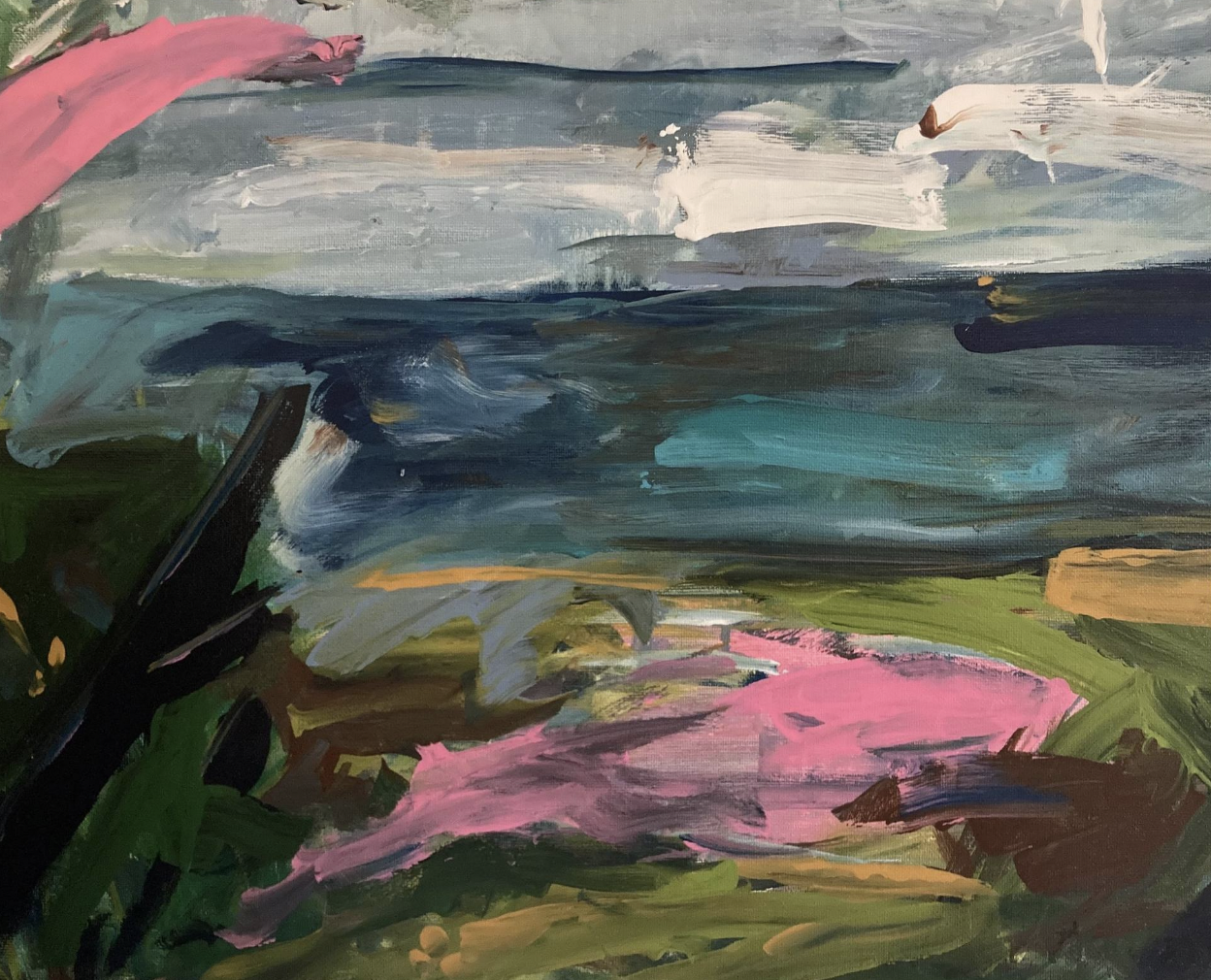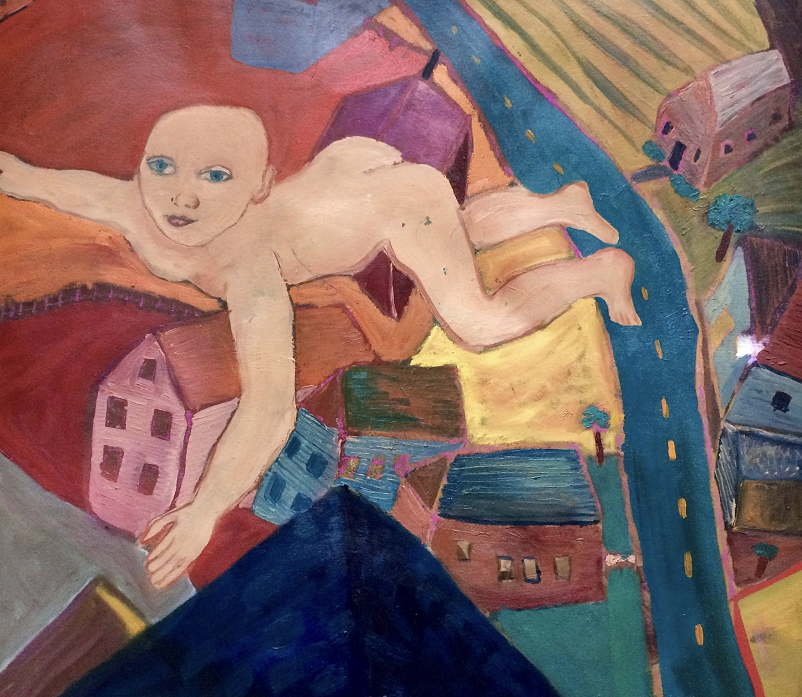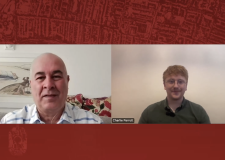‘Feeling safe in self-expression’ – in conversation with artist Julie Watson
Shamanism, mountain-top picnics, a canvas’ texture and window dressing in San Francisco: this is the perhaps, slightly bizarre list given to me by artist Julie Watson when I asked about her influences.
Upon further inspection of the many lives Julie has lived, this variation becomes unsurprising. Growing up in Colorado, she attended one of the most remarkable liberal art schools in America before studying in Sienna, Italy. She moved to Brighton for 25 years and now resides in Florida, where the weather looked remarkably better than from my window as we talk over zoom.
Describing Julie’s art is difficult, not least due to the huge range of subjects she recreates. Works range from intimate portraits doused in primary colours to fantastical scenes of figures and animals. ‘People look at my work and go: what’s the story behind this?’ Julie recounts, ‘like, what’s going on here?’. This dream-like quality is no coincidence, the works often being ‘inspired by a dream or a memory that’s not exact, but that comes forward’.
Julie was exposed to Carlos Castaneda’s writing on indigenous American Shamanism early on; while critics have questioned its accuracy, to Julie ‘it didn’t really matter to me either way, because it was about being able to bring that magical realism to life’. Magical realism, the literary genre, also wormed its way into her influences. The fuzzy impressions created by the likes of Gabriel Garcia Marquez and Isabel Allende are easy to spot in Julie’s pieces.

The sea, the sea by Julie Watson
What is present in all of her art, however, is her signature use of colour and texture. Many are bathed in deep rubies reminiscent of both her Colorado upbringing and her time spent in Italy, studying the Madonnas embedded in ‘early Italian medieval frescoes and paintings’.
‘Being in Italy and and traveling around as a young woman was a big influence that I didn’t realize until I went back to Pisa recently’ when ‘it struck me how a lot of my paintings were influenced by those Madonnas’.
‘My process is also sort of staring a lot at the canvas. I’m very interested in colour, balance and line – using paint as a line. So it’s also looking at the the actual the canvas itself, and what makes sense on the canvas’.

Flying Baby by Julie Watson
Julie developed this technique during her time at Bennington, the infamous Vermont liberal-arts college that taught the likes of Donna Tartt and Bret Easton Ellis. Posed the challenge of describing it in one sentence, Julie described Bennington as ‘a radical educational experience – it’s timeless, it’s provocative – and actually, you know? Educationally, it’s really valuable’. The fact her description demands an extra sentence is testament to how much Julies values the open-minded artistic opportunities of Bennington. On the topic of access, she says ‘It’s about breaking down those barriers’ which teach people that ‘it’s not yours, it’s someone else’s art and you can’t do art’.
Julie certainly practices what she preaches. ‘I was co-founder of a charity in Brighton called Little Green Pig which is a creative writing organization for 7 to 18 year-olds, to support their creative expression through words’.
Based on Sir Ken Robinson’s pioneering research, which highlighted the importance of teaching creativity to young people, the charity was mentored by London’s Ministry of Stories, and is quite definitely ‘still going’, as Julie puts it.
Now in living in Florida, Julie continues bringing art to those who most need it at the ‘Watson Caring Science institute’. Founded by her mother Jean Watson, the institute is ‘a global nonprofit based in the states, which supports and advocates for the value of caring and love in nursing’.
‘I think part of the theory of Watson and caring science is incorporating the humanities into our lives, into our health and valuing expression, painting, drawing, song, writing and self-expression’.

Girl and Dog in the Desert by Julie Watson
It is this symbiosis of the personal and the public that is so clear in Julie’s work. Her art, she says ‘is a personal journey, and is something that I get a lot of satisfaction out of.’
But just as important as a personal journey, as education, as therapy, is ‘being artistic because we are human, and because that’s how we are and who we are’. She emphasises that it’s through this self-expression that we can ‘respect each other’ and ‘listen to each other’s stories’.
Ultimately, for Julie, art is about ‘being able to feel safe in self-expression. I guess that’s probably what I’m about’.
Find more of Julie’s art here.
Words by Kate Bowie




















